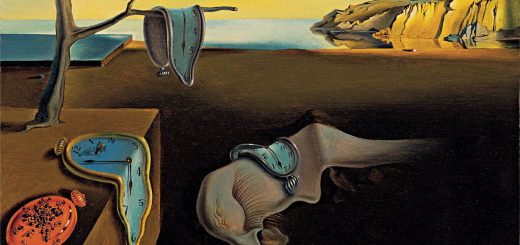Ettina Bhuja – The planning

Ettina Bhuja is a peak in Karnataka that is well suited for a 2-day trek. It is close to 300 km from Bangalore and hardly an overnight journey away.
Rohan, which not only means ascend but also happens to be the name of a friend, always told me about the fun in trekking. I had never done it and had no idea what it is. Though I have made umpteen trips to Nandi Hills and have a faint memory of going to the top of Skandagiri, Rohan always used to remind me that Ettina Bhuja is the real trekking experience. That was my driving force.
So, the first thing you need to do to prepare for trekking is as follows:
- Find out how many people are going with you.
- Find out when everyone wants to go.
- Find out if you need a guide.
- Find out how long the trek is.
- Find out where you will stay each night of the journey.
- Find out every point of the route.
- Find out what you will need to carry.
- Find out the total weight you want to carry.
- Find out the weather predictions.
- Find out how you will travel to the start point.
- Find out how much everything is costing per person.
1. Find out how many people are going with you.
A minimum size of 6 is recommended for any trek group. A minimum size of 4 is mandatory.
A basic thumb-rule to organizing any event where you aren’t giving anything for free is to expect only 1/3rd of the total invited to show up. So I found it important to invite at least 18 willing people. As it appears, most people in my friend group hadn’t been to a trek in a very long time and they all readily agreed to the idea.
2. Find out when everyone wants to go.
We started our planning for the trip from July itself. Ettina Bhuja can be summer as well as winter trek. Because of our late planning, winter was the closest option. I created a table of availability for every member for every weekend in November and December and a friend of mine, Jishnu, found that December 1st weekend will be best suited for a non-moonlit night. We wanted to see a clear sky so that is what we ultimately settled on.
3. Find out if you need a guide.
For Ettina Bhuja, you need a guide. Not only the forest is, as I am told, an abode for elephants but the forestation itself can be tricky in late December and it is easy to get lost or go on a dead-end trail. Plus you do not want to miss any water source in between.
4. Find out how long the trek is.
Trek is close to 12 km. The total ascent is close to 640 m (2100 ft). Some people might say it is 8 km but the path will make you go up and down and around so it effectively becomes 12 km. It will take a day to go up, and another day to come down so it is perfectly suitable for a weekend trek.
5. Find out where you will stay each night of the journey.
We were to start at Bangalore. We wanted to be well rested before the trek so we booked a sleeper bus. We made a mistake – the bus wasn’t multi-axle, the road was extremely bumpy, and the bus driver was driving like a mad man so all of us were practically flying all over our beds. I was holding the nearest pole and flying like a flag. My pedometer counted 3000 steps while I was trying to sleep, so you get the idea. It cost us close to ₹900 per person so I think booking an Innova or riding via a multi-axle semi-sleeper bus would be a better idea.
We needed a place to freshen-up before embarking on the trek. We needed to camp in the night at peak. 2 nights – 2 places.
The solution to camping is, as you might already know, carrying a tent and finding where you will be camping on the site beforehand. This ties to the requirement of a guide. Fortunately, all of this is easily solved by the availability of a local contact in almost all the treks. In the case of Ettina Bhuja, you can contact Gopu Gokhale, who has a farm near Shishila. Mr. Gokhale charges a modest fee for breakfast before starting the trek, lunch during the ascend, and might provide dinner too if you are very late. He has a large courtyard in his farm where you can rest, sleep, put all your luggage while you trek, freshen up as well as take bath. Did I say he is very friendly and hospitable? He will also arrange a guide for you as well as the transport to and from his house to trekking point and also to the bus stand after returning. Transport will cost extra.
Gopu will charge you ₹400 per person for the whole trip. The guide, Mr. Chennappa, will further charge you ₹1000 per day – so ₹2000 for 2-day trek for the whole group. As I mentioned earlier, a guide is must.
Gopu can be contacted at:
- +91 9980304097
- +91 9483211246 (Picked by his wife)
Chennappa’s can be contacted at +91 9379081785 but he doesn’t speak Hindi and mostly won’t communicate either so your best bet is to contact Gopu.
6. Find out every point of the route.
For this, we went through all the blogs we could find and created a mental map of all the landmarks that will fall on our way. Then we wrote down the expected timings for each landmark. This way we were able to think ahead about when to start, when to stop, how long to stop and how fast to walk. This was the final plan:

Very detailed, isn’t it? As it turns out – it was mostly useless. Our jeep came at 9:30 AM and we reached trekking point at 10:00 AM. From there onwards everything got delayed, several expected landmarks didn’t come to pass, and the total distance of trek turned out to be 12 km and not 8 km! HA!
7. Find out what you will need to carry.
Okay, now we are getting serious. Broadly speaking, everyone needs 3 distinct items that most people most probably don’t own:
- Tent – tents are available in different sizes and different brands that have different strengths and weights. We got good rates from X-Dog Trekking (XDG) in Bangalore. You can visit their office or call them to inquire about the rates. They sent us their catalog via WhatsApp. We suggest you to still go to their shop and have a look.
- Sleeping bag – if you have one, carry it. Most of us rented it from XDG.
- Rucksack – everyone needs to bring their own bag. This too can be rented from XDG. They have their own branded rucksacks that are very light but lack any back support. Accidentally one of these was torn. Rest assured it was an honest mistake from both of our sides and our rental fee was waived for that bag. Just check what you are getting yourself.
Now, what do we need put in a rucksack? Let’s further divide all the items:
- Wearable
- Trekking shoes (not a must, you may chose sport shoes)
- Slippers (optional)
- One piece of clothing in which you might want to take bath
- Light weight towel
- One piece of clothing in which you might want to relax
- Windcheater/Poncho because it may very well rain/drizzle on the way
- Sun glasses (optional)
- Cap (optional)
- Eatable – Since we were not sure about our own or each other’s capability to trek, we packed our bags with many many food items.
- Water bottles – we suggest 4 liters of water for the trek. There is a water source at the top so you can fill empty bottles there. Depending on your personal capability and health you can probably decrease it to 2 liters, but don’t go below it. Remember, if you get dehydrated – you will immediately get cramps and you won’t even be able to stand. So chose to be on the safer side.
- Electrolyte/Oral Rehydration Solutions (ORS) – we kept 1 packet of Electral powder per person. You can drink 4 packets per normal day. In retrospect, we should have carried 4 packets per person.
- Glucose – we mixed glucose in the water bottles and we aren’t sure if it helped us. Better go with Electral as dehydration will happen when you sweat a lot and Electral replenishes salts.
- Dinner items – we carried a lot of items with us because this was our first trek and we were organizing it ourselves:
- MTR Ready to eat.
- Raw uncooked rice.
- Cup-noodles
- Energy bars – not sure how important they were. But they were surely very tasty and we all wanted to eat ’em.
- Threptin biscuits – rich in protein.
- Fruits – Oranges and bananas. Oranges were a hit. Bananas got spoiled. Carry oranges! You will thank me later.
- Chips and cookies – up to you, really. Not needed per say.
- Gatorade – same as electral.
- Bread – Oh, this was a mistake. It is the only food item we couldn’t finish. Bread is heavy, takes a lot of water to go down your throat and gives way to constipation.
- Butter/Cheese/Jam – not needed
- First-aid kit
- Dettol/Savalon
- Cotton
- Bandages
- Band-aid
- Crape-band (2-3) – We came to need this.
- Anti-septic such as Neomycin
- Anti-diarrhoea medicine
- Crocin
- Pain reliever such as Volini/Oidex
- Antacid such as digene
- Miscellaneous
- Plastic covers – 2 per person. One will be used to bring back wet cloths. Another one will get used some way or the other.
- One or two extra large plastic cover for carrying the garbage. It is not only amoral to litter in the wild, but it is also illegal and forest officials will fine you. You need to bring all the garbage back to Shishila where you can leave it with Gopu and he will take care of it.
- Stove/Kerosene – Rent it from XDG. We carried two stoves.
- Fuel cakes – We carried it but not needed
- Matchbox/Lighter – Carry as many as you want, but at least enough to light that stove.
- Lightweight utensils – We carried two aluminium utensils of large size.
- Disposable plates/spoons. Carry two per person. Put them in the garbage bag after use. We got hungry after disposing of them and had to hunt inside the bag – a forgettable event obviously.
- Nylon ropes – we carried it but it never got used. Basically a safety precaution.
- Knife/scissors – a must.
- Torch – everyone should have one. Don’t depend on your phone as it will get discharged quickly. You can rent good ones from XDG.
- Toilet/Tissue paper – a must. You will need this in the morning. Doubly so because water will be scarce.
- Paper soaps – don’t use them in the water source!
- Brush/toothpaste
- Camera – for enthusiasts
- Sun screen lotion – women will ask for it.
- Odomas – This is a must – believe me. It actually won’t get used in the night because you will be in the tent, but the forest is home to many insects and you will need an insect repellent.
8. Find out the total weight you want to carry.
With all the items listed above, including the weight of rucksack and sleeping bag, we reached a total of 14 kgs per person. While though it was well within our limits, little did we know how wrong we were. Realizing this at the last moment, we kept a lot of our luggage back at Gopu’s shack before starting the trek and brought down our total weight to carry from 14 kgs to 12 kgs.
Not only you should aim to keep the total weight below 10 kgs (ideal would be 6), multiple people will have different strengths and in case someone suffers any kind of injury everyone else will need to share his/her load.
9. Find out the weather predictions.
We got to know that it rained heavily the previous weekend but fortunately for us, both weather predictions and the actual weather were mostly sunny with very slight drizzling.
10. Find out how you will travel to the start point.
Gopu arranged two jeeps for us.
11. Find out how much everything is costing per person.
Including the cost of renting tents, sleeping bags, Gopu’s charges, guide, jeeps, bus tickets, medicines, and food items – total cost came around to ₹3000 per person – a very reasonable amount and less than what any trip organizers will charge you.
This concludes the planning stage. I will post about the full trip in the coming week.




Awesome information. It really helped me a lot to organize the event with my group.